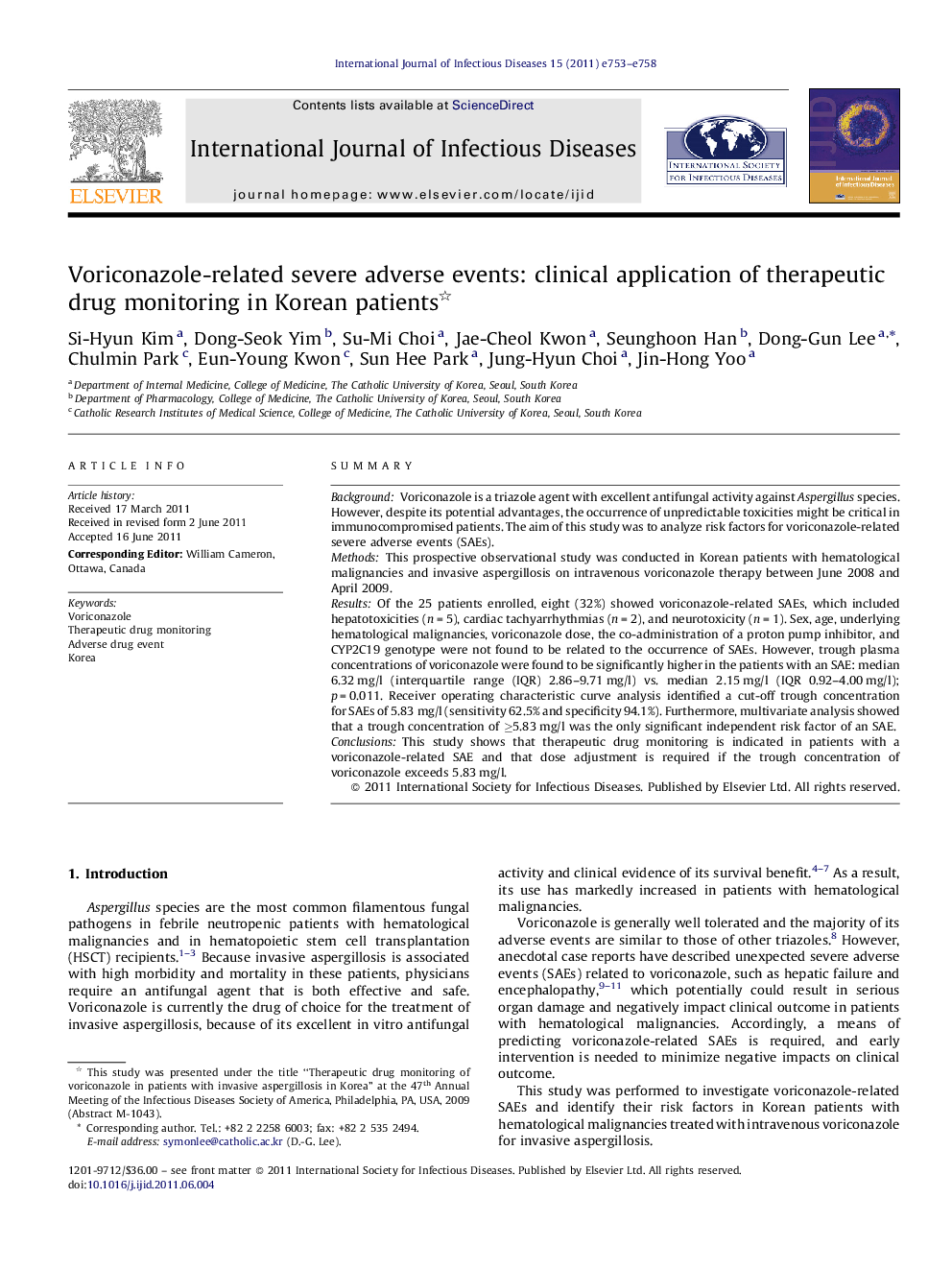| Article ID | Journal | Published Year | Pages | File Type |
|---|---|---|---|---|
| 3363482 | International Journal of Infectious Diseases | 2011 | 6 Pages |
SummaryBackgroundVoriconazole is a triazole agent with excellent antifungal activity against Aspergillus species. However, despite its potential advantages, the occurrence of unpredictable toxicities might be critical in immunocompromised patients. The aim of this study was to analyze risk factors for voriconazole-related severe adverse events (SAEs).MethodsThis prospective observational study was conducted in Korean patients with hematological malignancies and invasive aspergillosis on intravenous voriconazole therapy between June 2008 and April 2009.ResultsOf the 25 patients enrolled, eight (32%) showed voriconazole-related SAEs, which included hepatotoxicities (n = 5), cardiac tachyarrhythmias (n = 2), and neurotoxicity (n = 1). Sex, age, underlying hematological malignancies, voriconazole dose, the co-administration of a proton pump inhibitor, and CYP2C19 genotype were not found to be related to the occurrence of SAEs. However, trough plasma concentrations of voriconazole were found to be significantly higher in the patients with an SAE: median 6.32 mg/l (interquartile range (IQR) 2.86–9.71 mg/l) vs. median 2.15 mg/l (IQR 0.92–4.00 mg/l); p = 0.011. Receiver operating characteristic curve analysis identified a cut-off trough concentration for SAEs of 5.83 mg/l (sensitivity 62.5% and specificity 94.1%). Furthermore, multivariate analysis showed that a trough concentration of ≥5.83 mg/l was the only significant independent risk factor of an SAE.ConclusionsThis study shows that therapeutic drug monitoring is indicated in patients with a voriconazole-related SAE and that dose adjustment is required if the trough concentration of voriconazole exceeds 5.83 mg/l.
